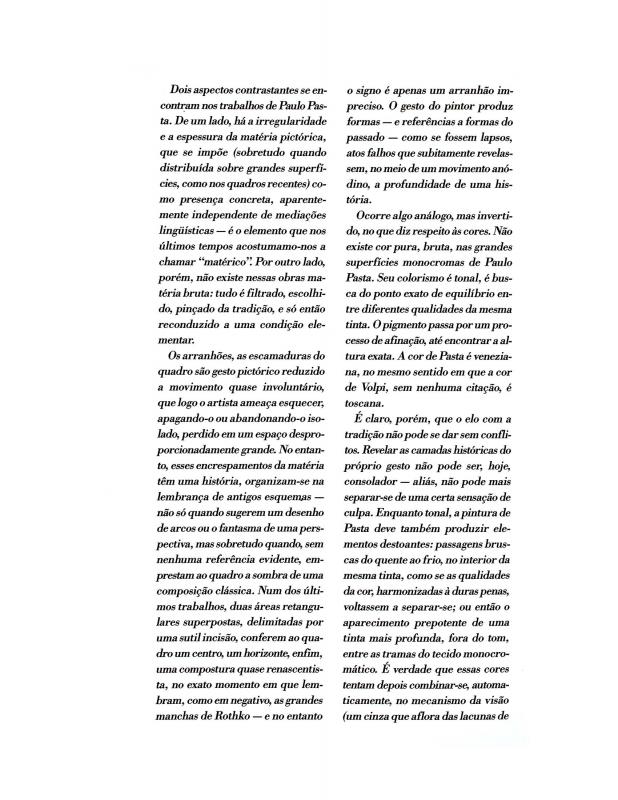Nuno Ramos (b. 1960, São Paulo) is a sculptor, painter, draftsman, set designer, writer of essays, and creator of videos. From 1978 to 1982, he studied philosophy at the Faculdade de Filosofia, Letras e Ciências Humanas da Universidade de São Paulo (FFLCH/USP). He then served as editor of the journals Almanaque 80 and Kataloki (1980–81). The artist finally turned to full-time work as an artist in 1983 when he founded a workshop called the Ateliê Casa 7, along with Paulo Monteiro (b. 1961), Rodrigo Andrade (b. 1962), Carlito Carvalhosa (b. 1961), and Fábio Miguez (b. 1962). Ramos executed his first three-dimensional works in 1986. The following year, he was given a scholarship by the Museu de Arte Contemporânea da Universidade de São Paulo (MAC-USP): the first Beca Émile Eddé de Artes Plásticas. In Porto Alegre in 1992, the artist exhibited his installation called 111, a number that refers to a massacre of prisoners held in the penitentiary Casa de Detenção de São Paulo (in the Carandirú neighborhood) that took place that same year. He published a prose book, Cujo [Whose (1993)], and two years later, the book/object Balada. He won the competition held in Buenos Aires (Argentina, 2000) for the project to construct a monument in memory of the people who were “disappeared” during Argentina’s military dictatorship. In 2002, he published the book of stories O Pão do Corvo [The Crow’s Bread]. For the composition of his work, Ramos makes use of various materials and media (printing, painting, photography, installation, poetry, and video).
Lorenzo Mammì earned his master’s degree in Florence, Italy (Materie Letterarie della Università degli Studi di Firenze, 1984), and his doctorate in philosophy in Brazil at the Universidade de São Paulo in 1998 (USP). He is currently a professor at the same institution. Although his experience is primarily in the arts (especially music), he works in other specialties such as contemporary art and patristic philosophy. As a curator, he distinguished himself with his approach to coordinating the project Arte Concreta Paulista and for curating the exhibition Concreta ’56 (Museu de Arte Moderna de São Paulo, 2006). He has also published various books: Volpi (São Paulo: Cosac Naify, 1999), Carlito Carvalhosa (São Paulo: Cosac Naify, 2000), and Iole de Freitas: Sobrevôo, as well as organizing an anthology of texts (São Paulo: Cosac Naify, 1999, 2000, and 2002).
As a critic, Lorenzo Mammì also wrote the essay regarding his thoughts on painting of the 1980s, “Dois aspectos contrastantes se encontram nos trabalhos de Paulo Pasta” [doc. no. 1111264], and on the sculptor José Resende, “Contrações do espaço” [doc. no. 1111280].


